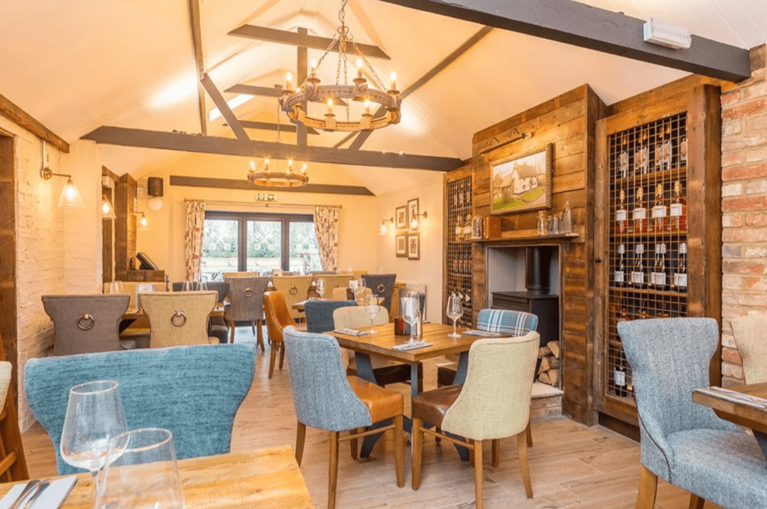As we at Wells & Co. ramp up our efforts to make our pubs, beer and brewery as sustainable as possible, you might be wondering what more you could be doing to help the environment on a personal level.
If so, you’re far from alone: a 2021 survey by sustainability consultants GlobeScan discovered that, of the 27,000 people polled, 73% said they wanted to reduce their environmental impact. Recent world events and cost-of-living increases have probably pushed that figure even higher in 2022 for financial reasons, and there’s no shame in that – reducing our carbon footprints should be a win-win situation, benefitting our bank balances as well as the planet.
If you’re reading this and nodding your head, there’s one obvious place to begin: your home. There are steps you can take right now that will reduce your bills and future-proof your living environment, not to mention score you some serious karma with Mother Nature. Let’s take a tour of the average home and see where improvements can be made…
The Garden
After two years of on-off lockdowns, those of us lucky enough to have some outdoor space on our property value that space more than ever. Now, how to make the most of it in a way that benefits both the environment and ourselves?
Welcome some visitors – Habitat loss is a big environmental challenge, and gardens can play in important role in providing the birds and the bees with somewhere inviting to hang out. Planting a wide variety of plants, putting our food and water for birds, and constructing ‘bug hotels’ made of logs or old pallets can all help your local wildlife to flourish. Hedges are a good thing – they absorb more moisture, while allowing a variety of animals from moths to hedgehogs to shelter and move about safely – and you can quickly create a small pond in your garden by burying a washing-up tub so that it’s flush with the ground.
Get back to your roots – Trees are most definitely a Good Thing, replacing the carbon dioxide we produce with clean oxygen, so let’s plant some more of them. Fruit trees are a good bet; they produce attractive flowers, are less prone to being attacked by pests, plus who doesn’t like free food? If a tree won’t fit, shrubs are a great alternative – they can do a similar job in a much smaller space.
Crafty composting – There are all kinds of benefits to home composting. A compact, insulated compost bin that works relatively quickly can be a smart way of disposing of kitchen and garden waste; as well as keeping that waste from going to landfill, you’ll have a ready source of fertiliser for your plants and your happier, healthier soil will hold more carbon and more water.
Ready for the rain – Britain is already (in)famous for its weather, and unfortunately we can expect bigger, more frequent downpours due to climate change, with winters becoming wetter and summers more prone to thunderstorms. Taking steps to soak up rainwater will reduce the risk of local flooding, and the water you collect can also be used on your garden to lower your utility bills.
As well as attaching water butts to your downpipes, you might consider installing a living roof. They’re complicated on big buildings, but a surprisingly practical option for smaller roofs such as garden sheds or bike stores. Covering walls with climbers and shrubs can also be an effective way to absorb more rain and insulate your building, all while absorbing more carbon dioxide and prevening soil erosion.
The Kitchen
Big gains to be had in the kitchen: it’s generally the most energy-hungry room in the house, as it’s where most of our appliances live. Whenever the time comes to replace those appliances, look for highly-rated models to keep energy consumption and running costs to a minimum. According to the Energy Saving Trust, replacing a cranky old G-rated gas boiler with a modern A-rated version could save up to £300 per year.
Cleaner cleaning – We’ve all leant pretty hard on cleaning products during the pandemic, and eco-conscious brands can make a difference here. There are several brands now on the market offering products that clean effectively without gallons of environmentally harmful chemicals ending up in our waterways as a byproduct. It’s also worth seeing whether your local supermarket has a refill scheme on offer yet; repeatedly refilling the same detergent bottle is a much better bet than the single-use plastic we’ve traditionally relied on.
Eat smart, Waste less – Did you know that around a third of food currently produced globally ends up being thrown away? That’s a scary statistic, it’s the reason we’ve introduced initiatives such as Too Good To Go and food waste recycling in our managed pubs, and it’s also a great reason to fine-tune the way we eat at home. One approach worth trying is the ‘half and half method’: use half the meat you normally would, then replace the rest with any soon-to-perish items in the vegetable drawer or some pulses, beans and grains. Not a bad way to hit your daily recommended fibre intake of 30g, either.
On the pulse – Reducing meat consumption is one thing, but it’s still far from clear whether the ever-growing ‘fake meat’ market will result in a lower carbon footprint than the real thing. However, you can’t go wrong with pulses. Chickpeas, lentils and fava beans are your friends; they’re environmentally friendly (low in carbon, water and land use), high in protein, and soak up the flavour of whatever they’re cooked with, making them the perfect fit for everything from pies to paella.
The heat is on – Apparently, the average British kettle boils 1,500 times a year. That’s a lot of tea! Making the switch to an ‘eco kettle’ can therefore me a smart move. The new breed of kettles allow you to set the temperature or amount of water you need and acts like a Thermos, keeping the water hot so it won’t need re-boiling when you want another drink.
The Bathroom
Moving upstairs, most bathrooms offer two big areas for improvement: water and plastic. Fortunately, ways to reduce our consumption of both are coming to market all the time. Let’s take a look at some options:
Watch the throne – Modern button-press toilets can leak thousands of gallons of water every year because their seals degrade faster than old-fashioned toilet handles. If you’re in the market for a new loo, check out some of the low-flush models now available that create a vacuum seal when you put the lid down, using far less water with each flush.
Shower power – Ban the bath! A five-minute shower can save up to 35 litres of water (plus the energy to heat it) by comparison. A low-flow showerhead with a smaller diameter will give you that high-pressure ‘premium spa’ feel without the water bill to go with it. Finally, consider a glass screen instead of a plastic shower curtain; the curtains end up in landfill, and what’s worse, some studies have shown them to release volatile organic compounds – harmful to marine life – under the heat and pressure of shower water.
See you at the bar – Single-use plastic bottles have had their day. Refillable, reusable bottles are the way forward, with an over-growing range of brands offering sachets or packets that reduce our reliance on plastic. Let’s not forget about the old faithful bar of soap, either – it’s a classic for a reason, and modern varieties won’t dry out your skin or irritate it with harsh chemicals.
Not just for pandas – bamboo is a big deal these days. A highly sustainable alternative to plastic, you can now find everything from shower mats to toothbrushes made from the stuff. As a fast-growing crop, bamboo doesn’t need fertiliser or excessive amounts of water, yet it releases more oxygen into the air than other plants of a similar size. Provided they’re not coated with chemicals, bamboo products are also biodegradable and potentially even compostable at the end of their working lives.
The Bedroom
Are you being kept awake by ‘eco anxiety’? If so, let’s see what changes to your bedroom could help you sleep more easily. Everything from organic cotton bedsheets to an LED bulb for your reading lamp can ensure that the magic happens as sustainably as possible.
Keep the heat – If you’re lying in bed staring up at the ceiling, you’re on the right track. Loft insulation, much like cavity wall insulation, is one of the most effective ways to retain heat in your home and money in your bank account. Costing as little as £300, the Energy Saving Trust report that it can pay for itself within three years of installation. Home heating grants are also worth investigating with your local authority.
Sustainable chic – Some of their shellsuits might make your eyes bleed, but those achingly hip second-hand clothing shops on Brick Lane have the right idea. Vintage stores and swaps with friends can keep your wardrobe looking fresh without the costing the earth. The most sustainable clothes are the ones you already own, and bear in mind the 30 Wears Challenge if you are buying new – if you don’t think a given piece has 30 wears in it, look elsewhere.
Materials matter- while we’re on the topic of clothes, it’s worth giving some thought to what your future purchases are made from. Polyester and other plastics are here to stay, and not in a good way- they’ll be clogging up landfill sites for generations to come. Instead, opt for natural fibres such as linen, hemp or organic cotton, which will decompose at the end of their life.
Don’t be a pane – When a quarter of heat from the average home is lost via its windows and doors, it’s easy to see how insulating these areas can quickly pay dividends. Upgrading to energy-efficient double-glazed windows can save £120 a year on heating bills, according to the Energy Saving Trust. If a full replacement isn’t on the cards, caulk the edges of your existing windows to plug hard-to-see gaps and consider replacing blown individual panes. Thicker curtains are also a good look, preventing heat loss in the winter as well as keeping your bedroom nice and cool at the height of summer.
Latest News
-
Cox’s Yard Reopens Following Stunning £355k Refurbishment
2nd July 2025The £355k upgrade has elevated the pub experience for locals and visitors alike – all...
-
Double award-winning pub The Cross Keys in Woolstone
2nd July 2025The Cross Keys in Woolstone is celebrating a double victory this year after scooping ‘Best Restaurant’...
-
The Star & Garter Reopens at the heart of Chelveston
13th June 2025After more than a year of silence, the heart of Chelveston will once again be alive with conversation,...




